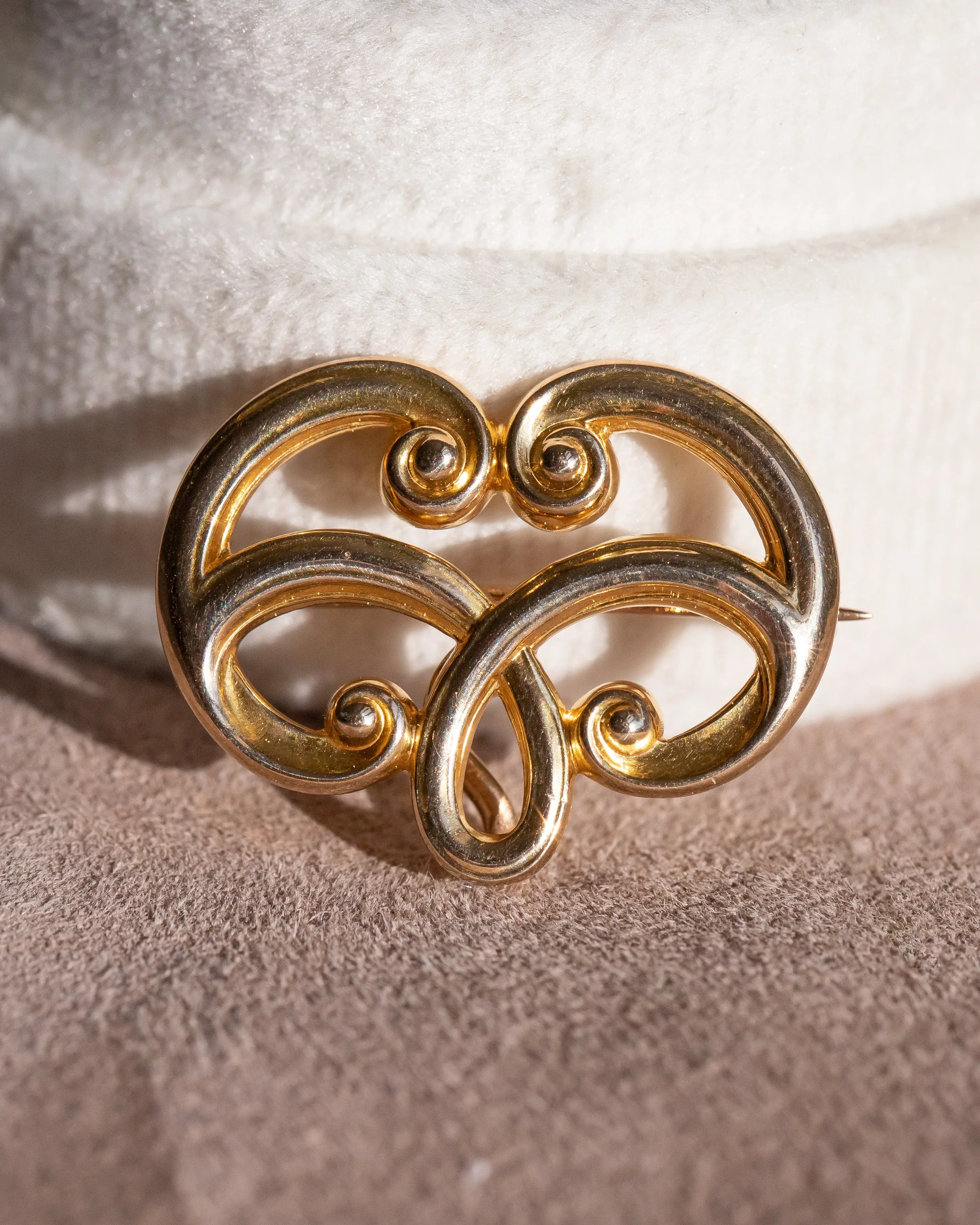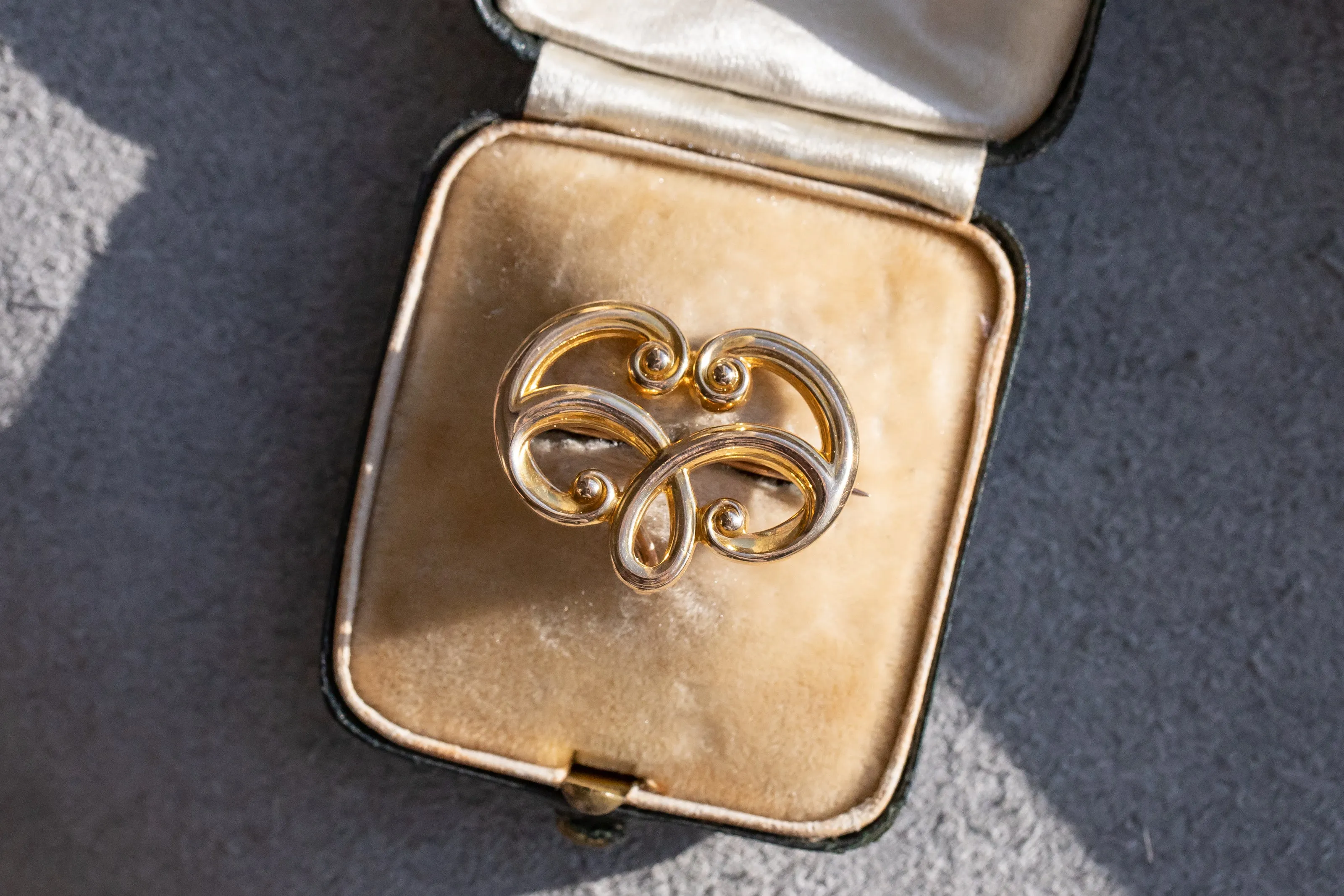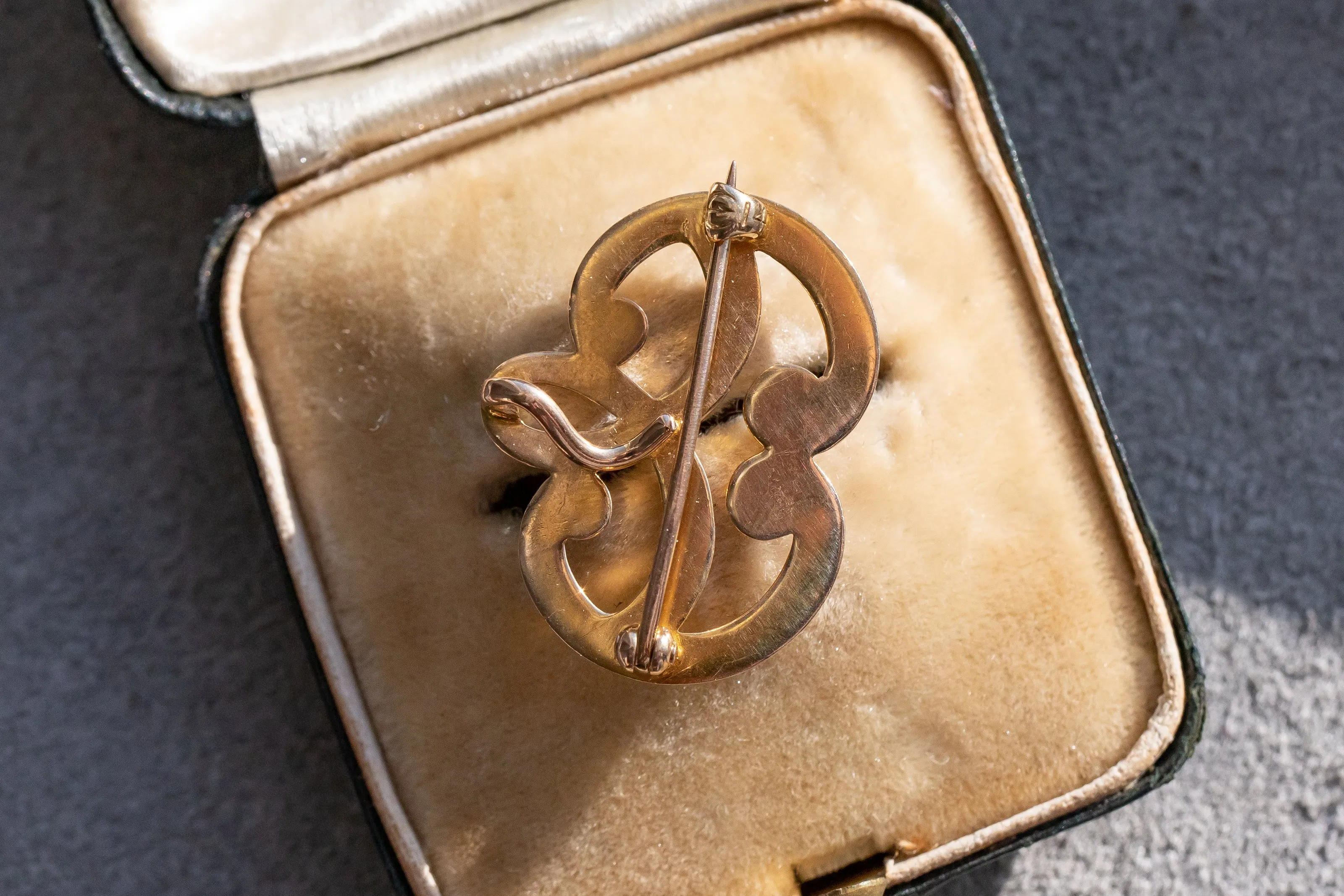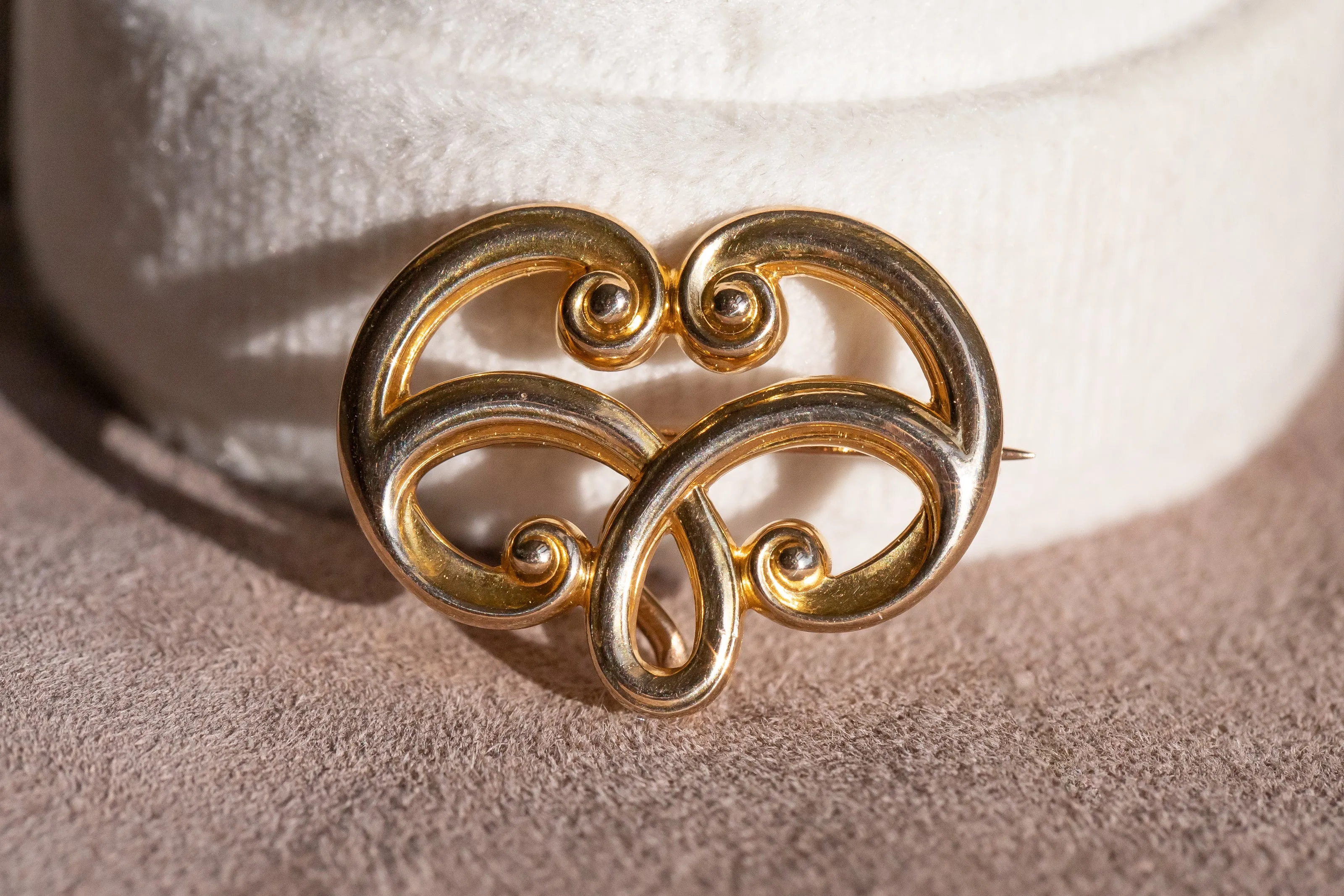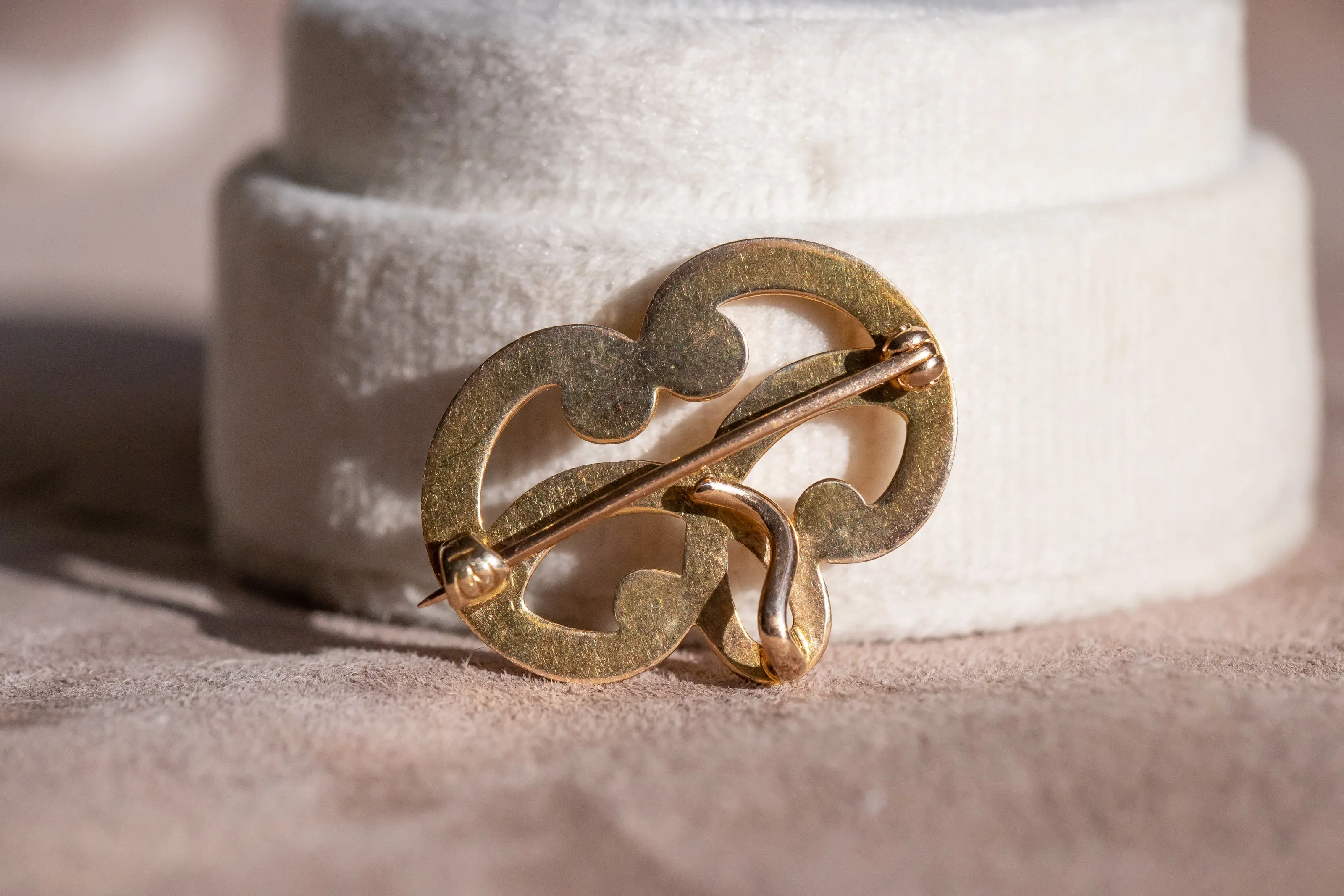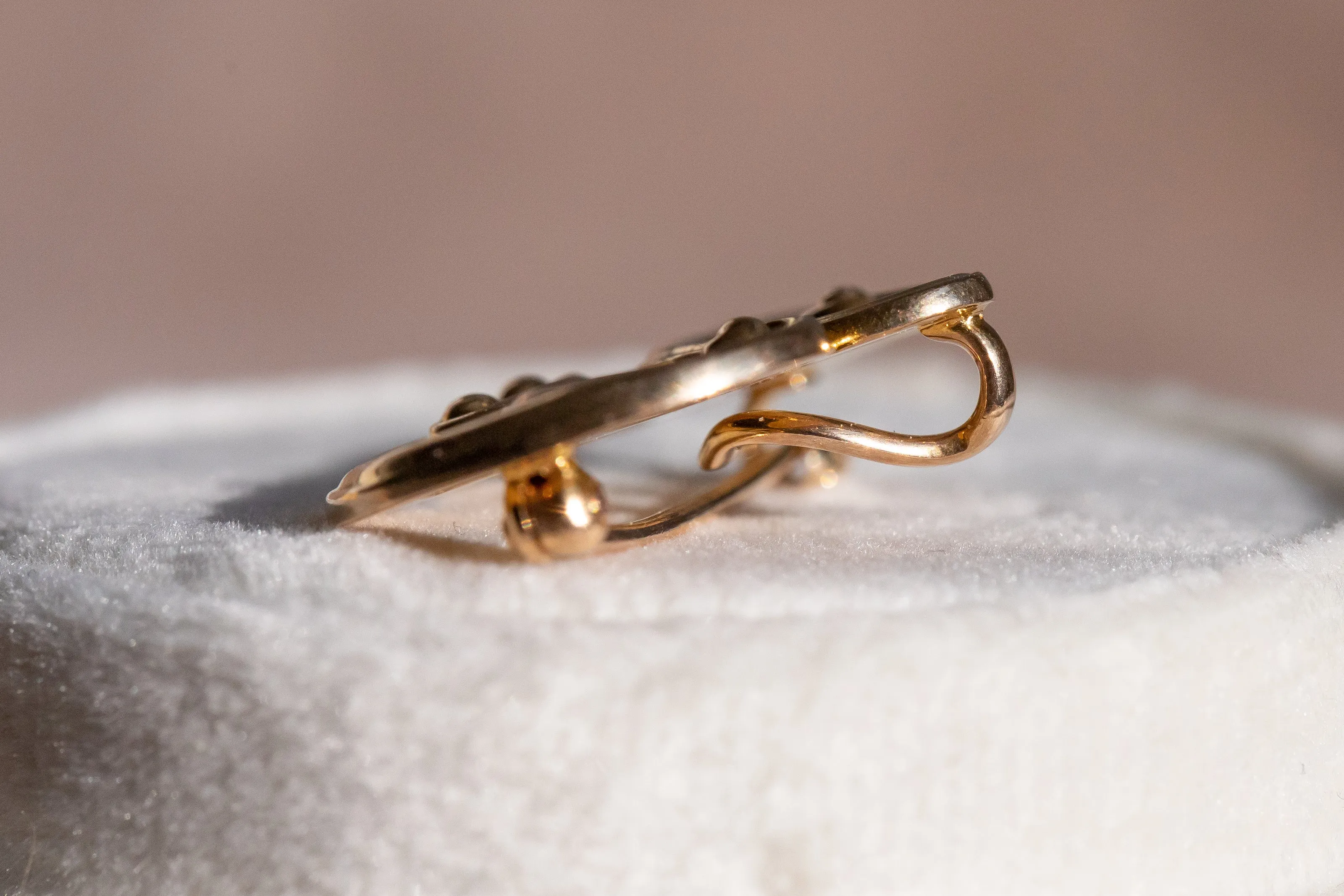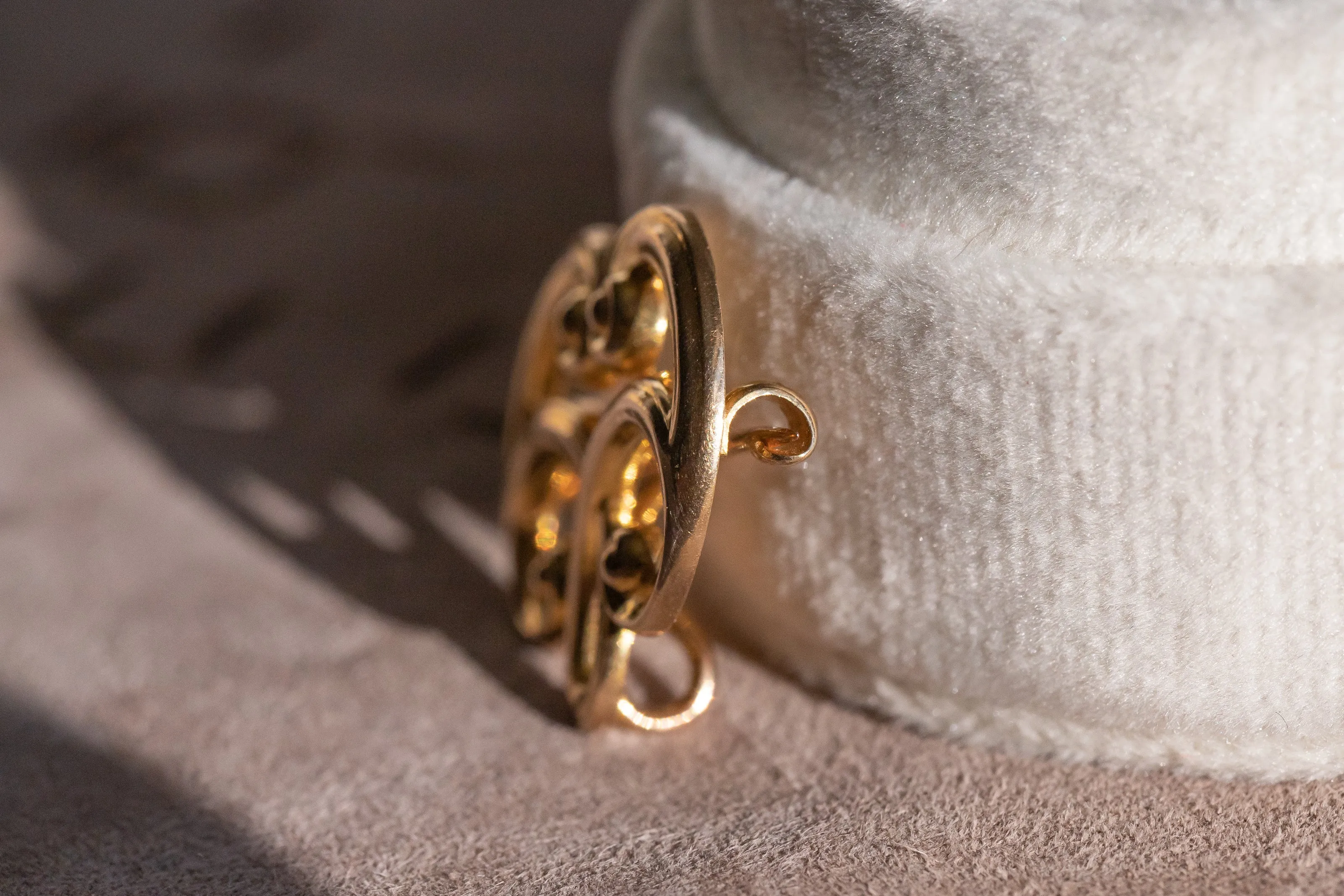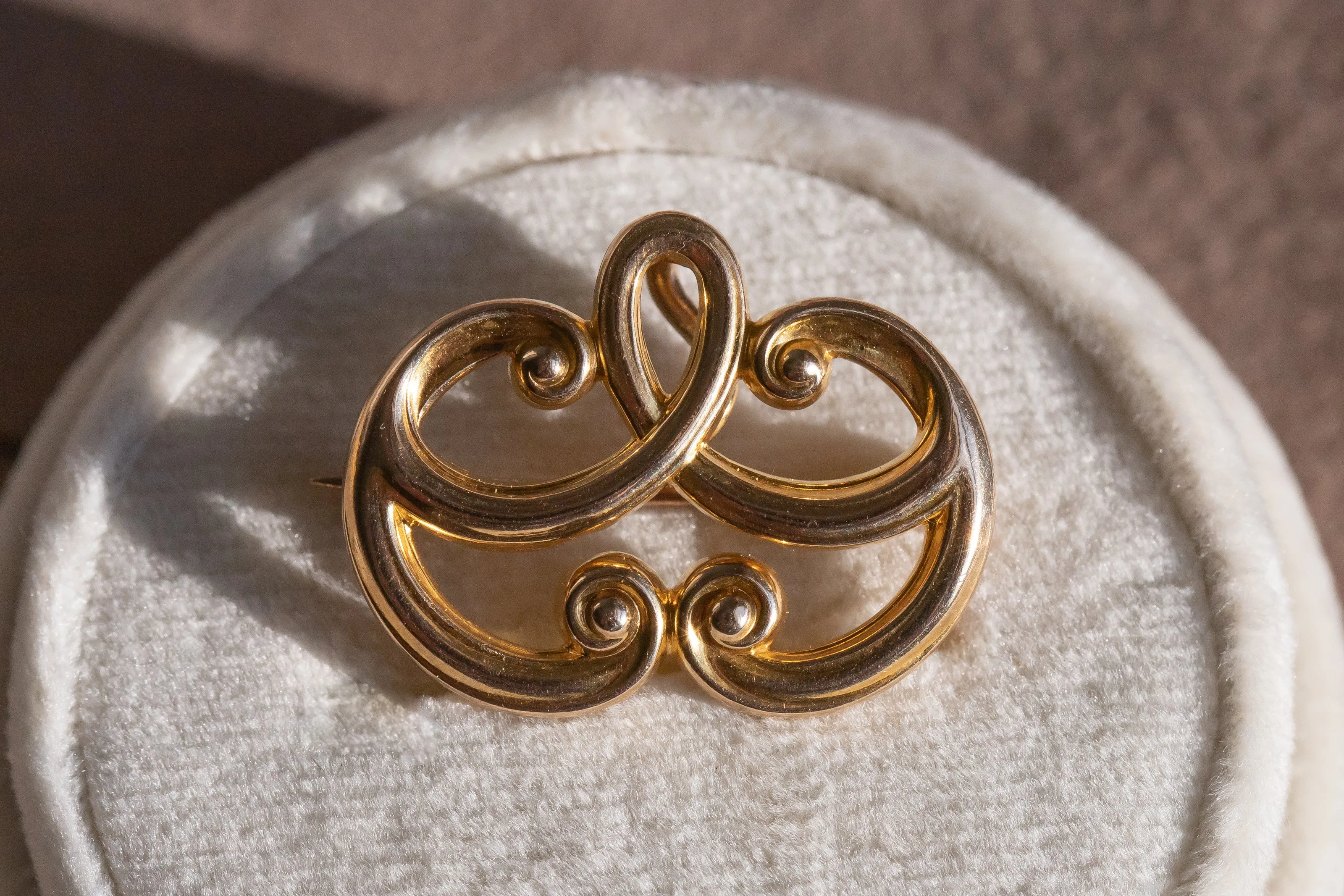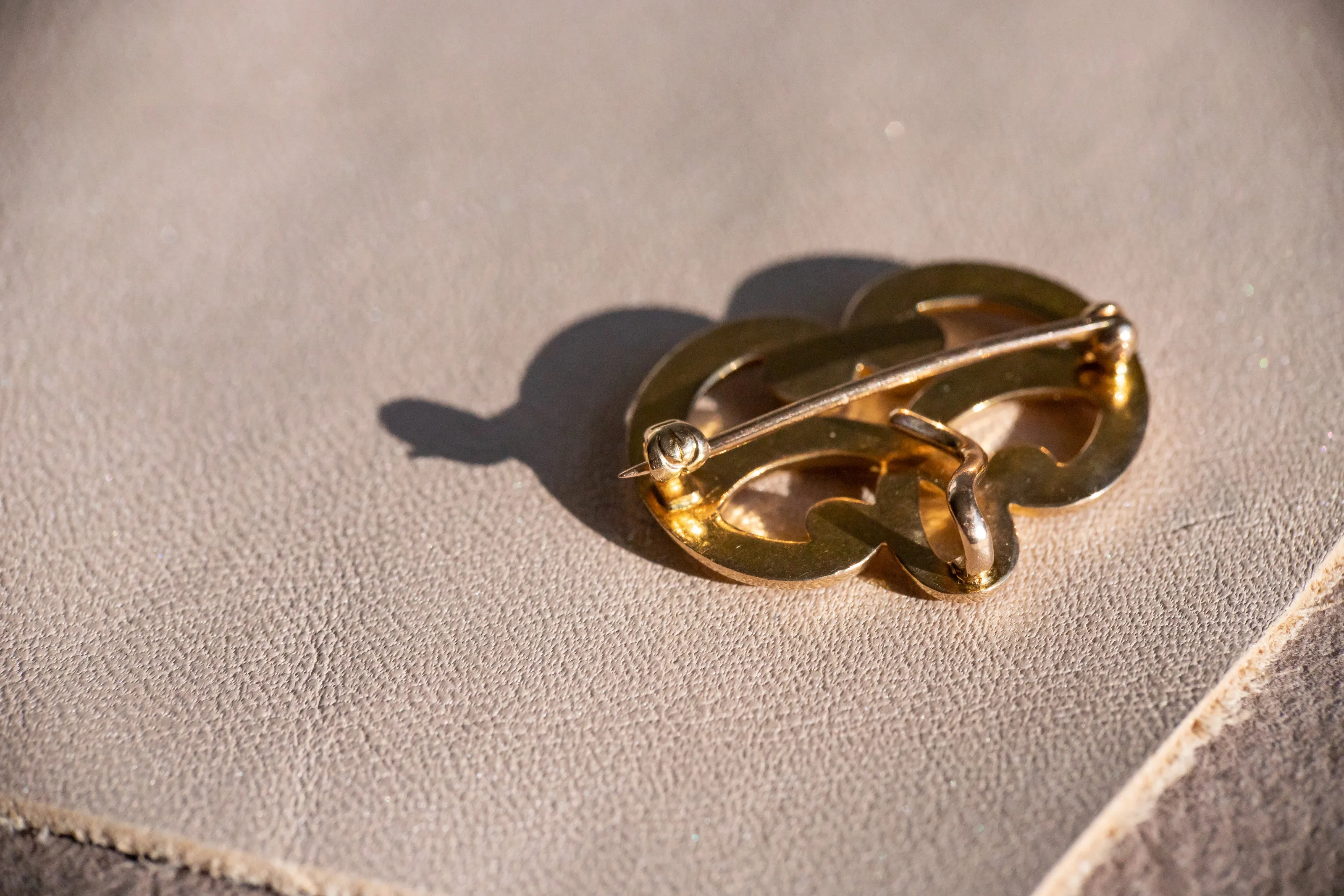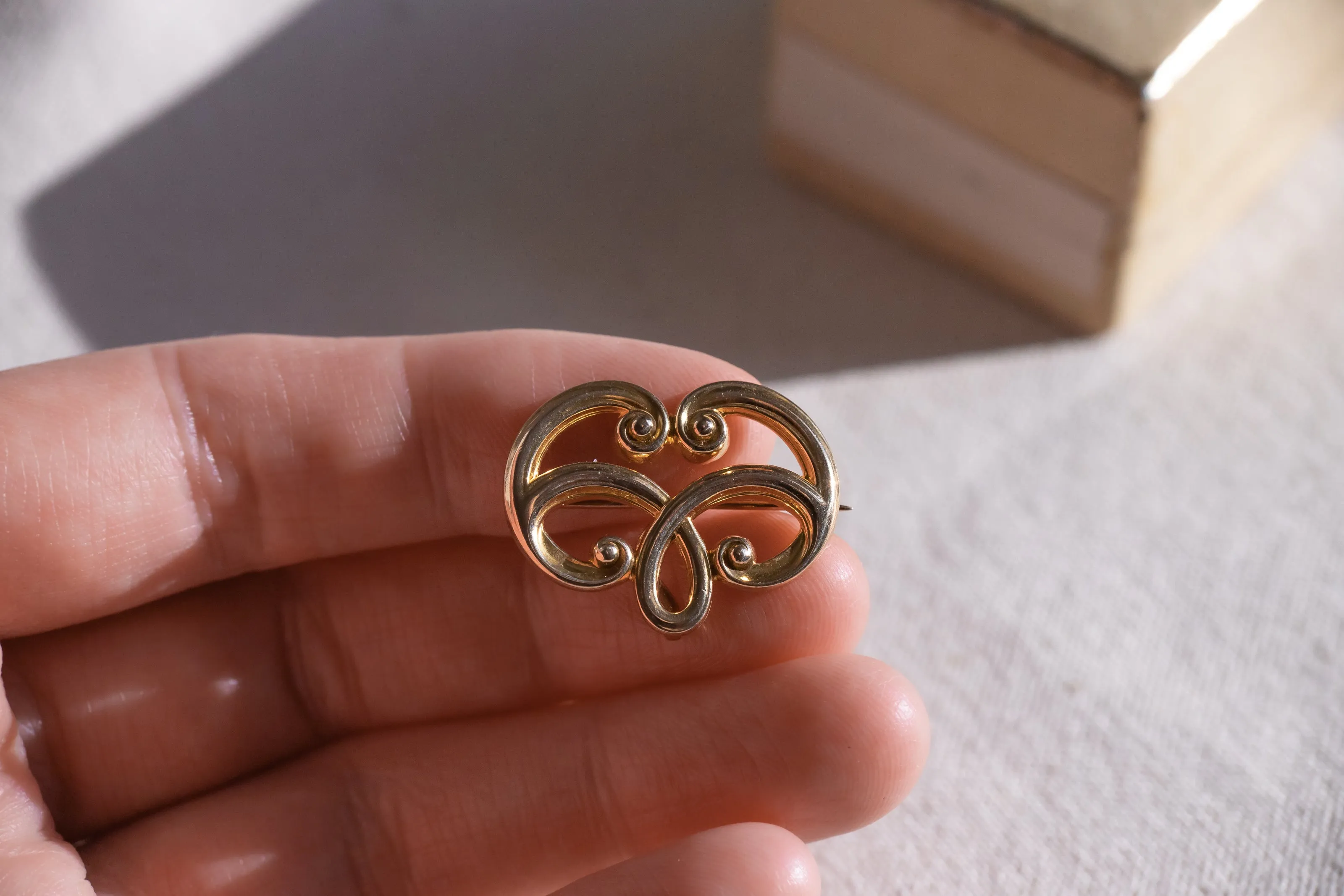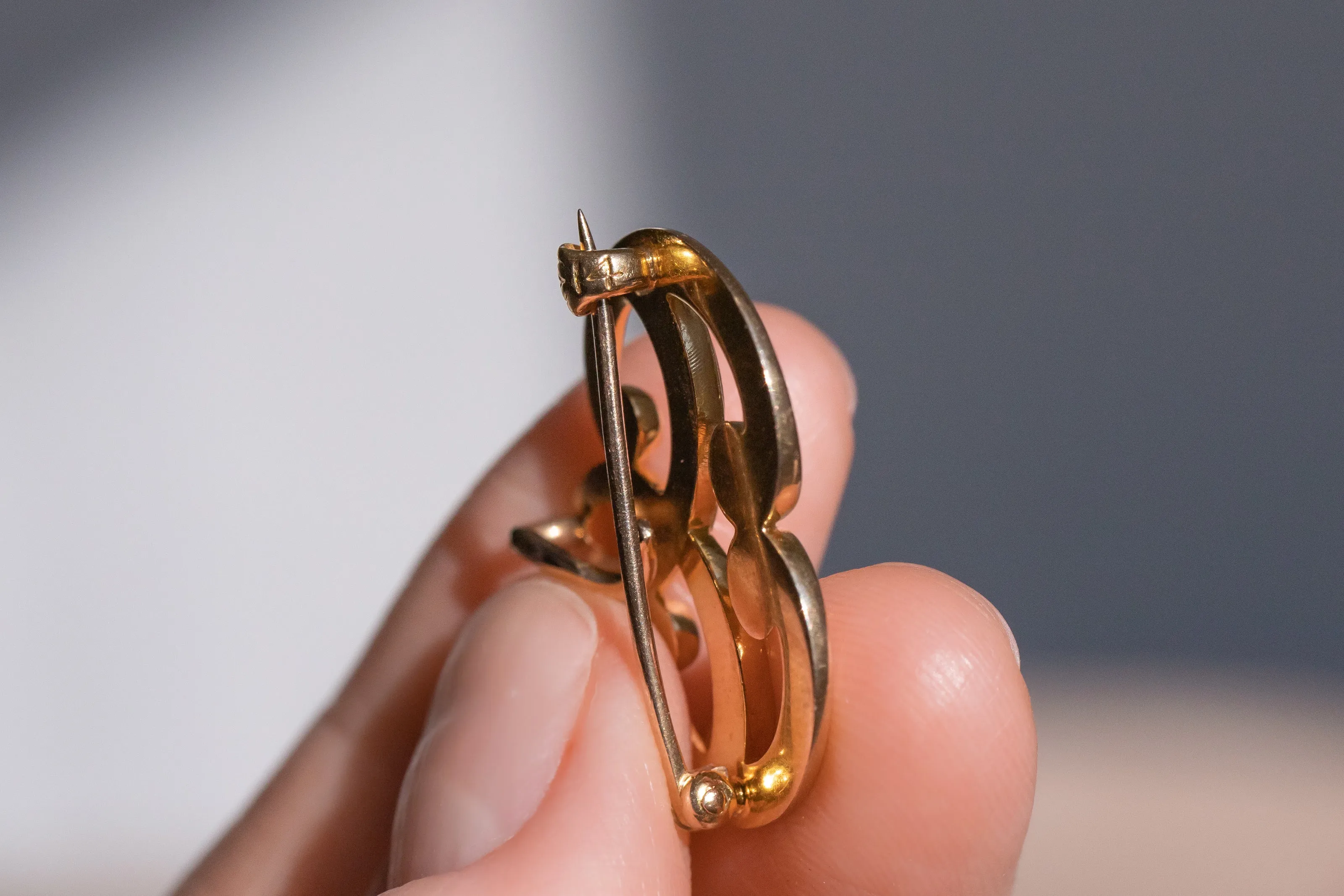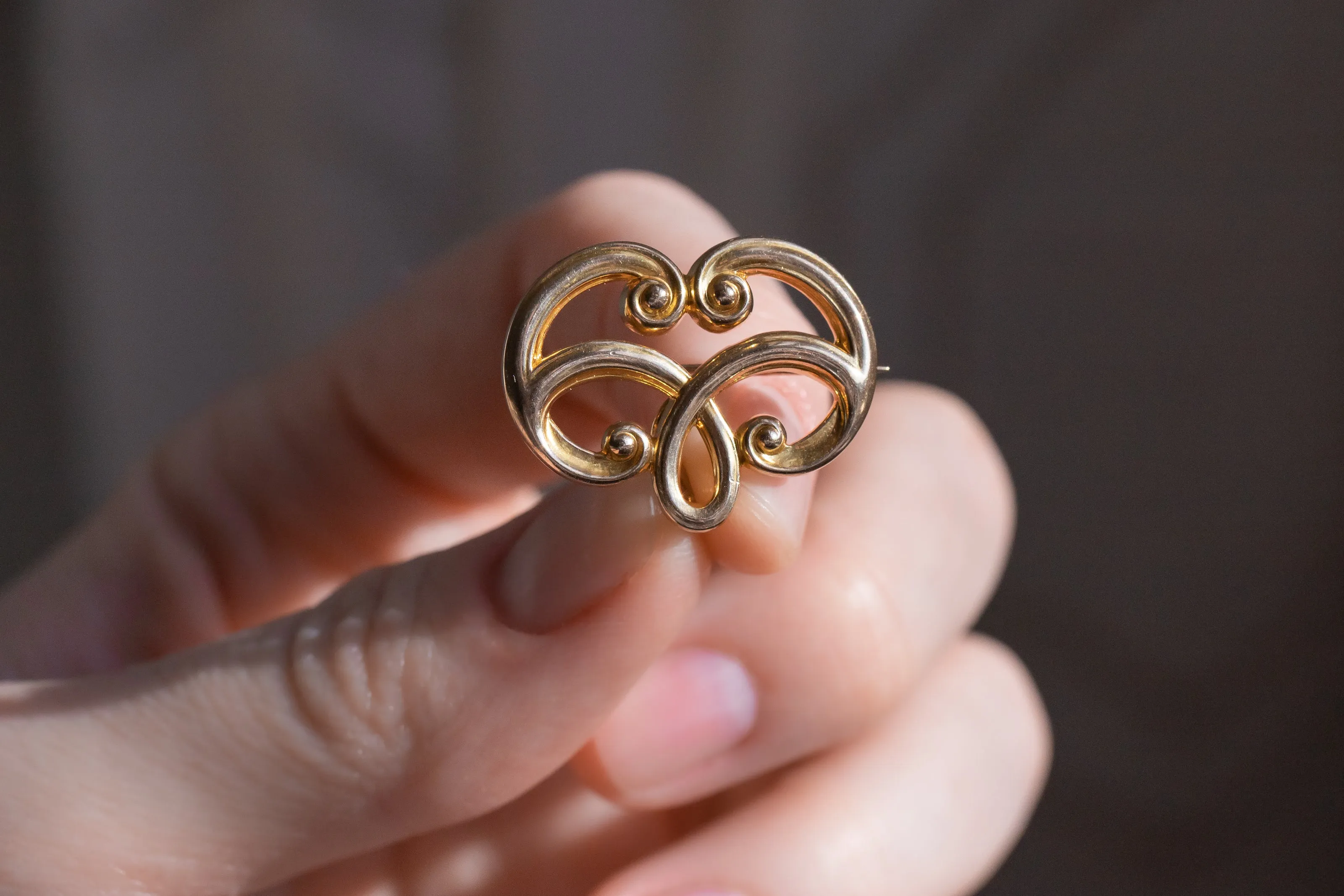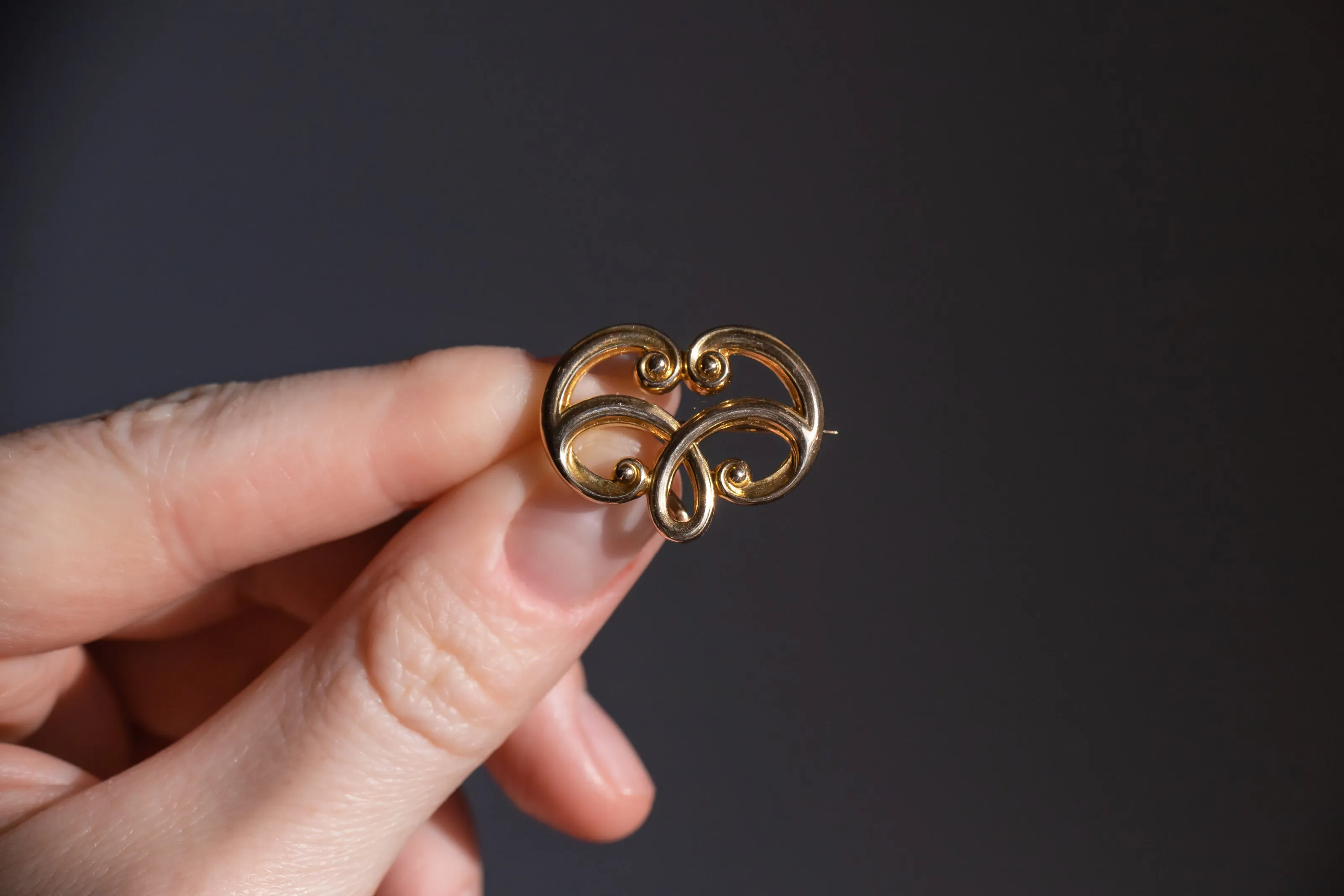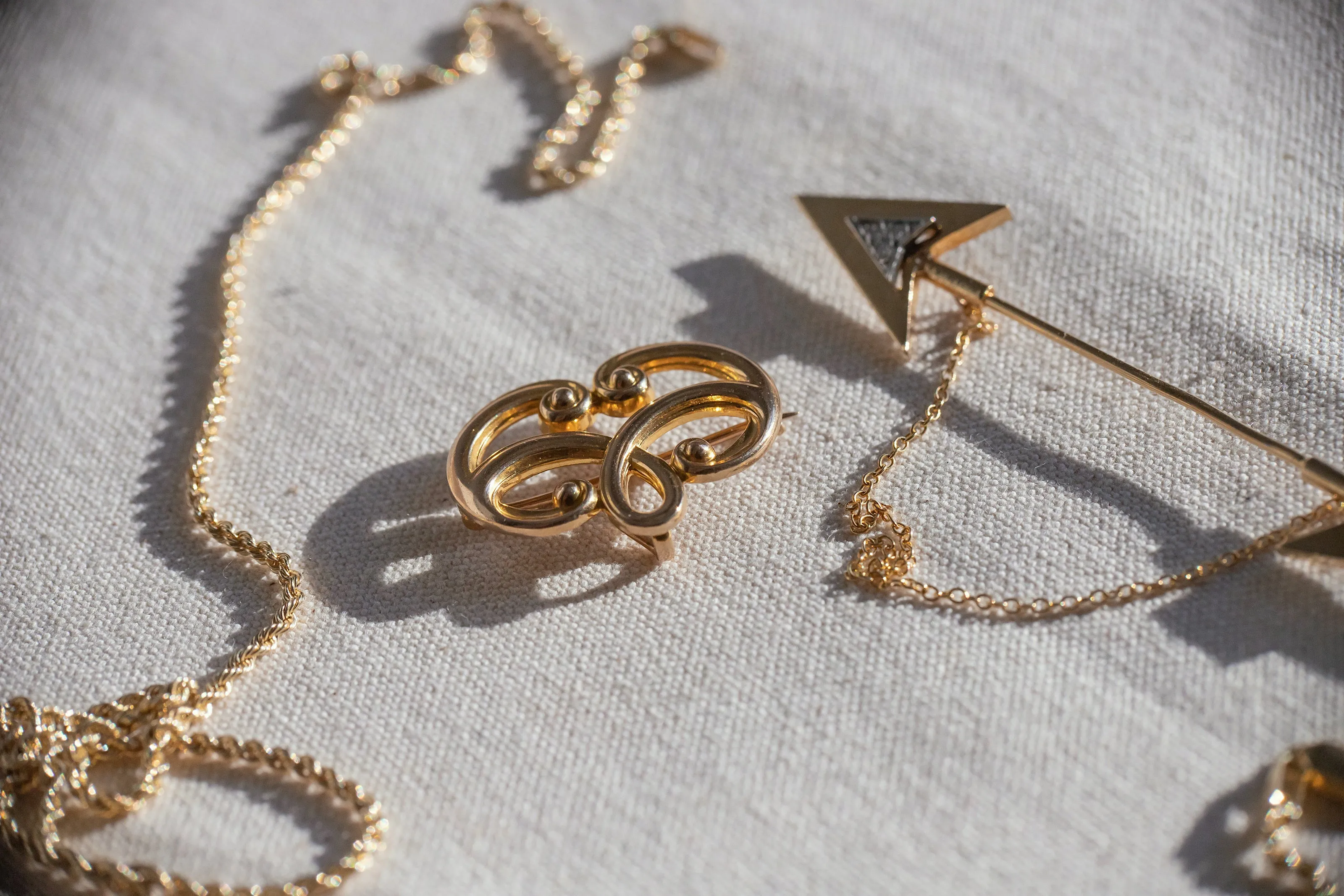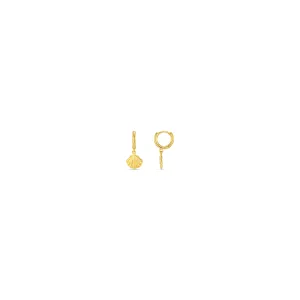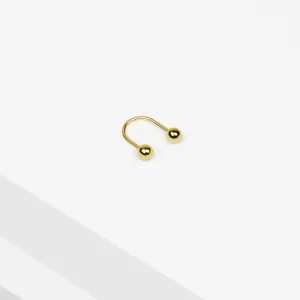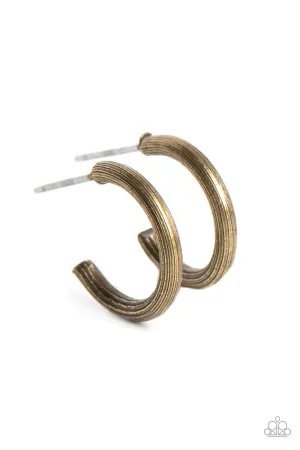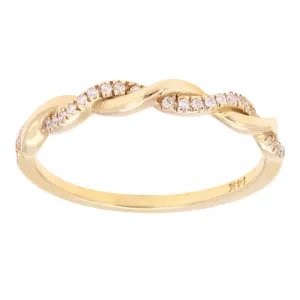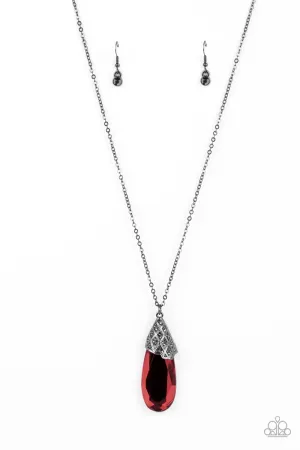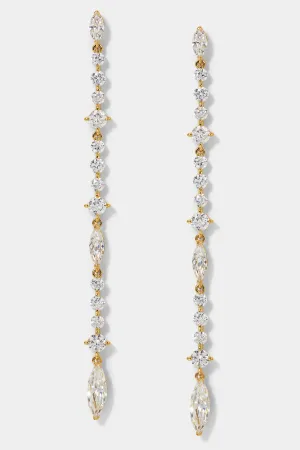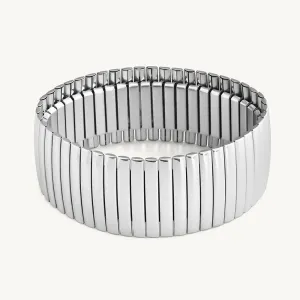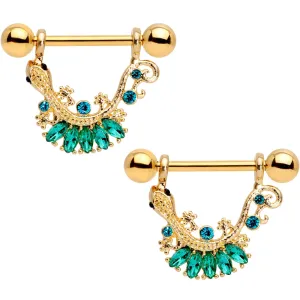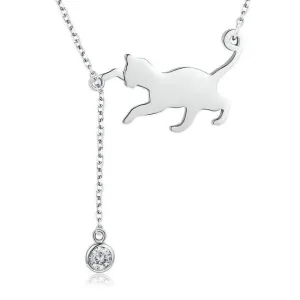General Information:
- Precious Metal Weight: 1.88 dwt
- Precious Metal Material: 14k yellow gold
- Dimensions: The pin measures 27.27 mm east to west (including the stem pin that extends beyond the edge of the pin's face, as is standard of open c-clasp closures dating to circa 1890-1910). The pin measures 20.05 mm north to south, and is 5.51 mm deep including the stem pin and the watch hook on the pin's reverse.
- Weight: 2.92 grams
- Markings: The c-clasp closure is stamped with a "C" intersected by an arrow, coined a "Cresarrow", and is followed by "14". The cresarrow is a symbol of the famed jeweler Henry Blank.
- Era: The maker's mark, open c-clasp, swirled motif and design indicate that this piece was likely created sometime between 1895-1900, and while it could date as late as about 1910, it probably is not any later than that.
- Buyer Notes: An unassuming yet visually stunning little piece, this pin is representative of a fascinating and transitional period in history. Its design is feminine and elegant, while its scale is modest and versatile.
The Story:
Sweet and petite, this gold pin's design recalls the organic movement of the Art Nouveau period, while also featuring the geometric flair of the imminent Art Deco movement. Likewise, the motif embodies the refined sophistication of the Edwardian years in which it was made, and in sum, this pin represents the intersection of three pivotal periods in art and jewelry history.
The pin's open c-clasp bears a cresarrow hallmark, which is the symbol of the famed jeweler Henry Blank, whose company was renowned for their detailed precision and fabulously trendy designs. The company created jewelry for other famous retailers including Crump & Low, Raymond Yard, Shreve, Black, Starr & Frost, Grant A. Peacock, Oscar Heyman & Co, Neiman Marcus, and even Tiffany & Co.
Henry Blank was also a survivor of the Titanic, having purchased a first class ticket for the grand total of £31 for Cabin number A-31. His company's work is much beloved for its excellent craftsmanship, elegance and longevity. This sweet pin exhibits all the best of these qualities.
As a relic of the Edwardian years that preceded World War I, this pin was designed to adorn a lady's upper bust below her collar. Brooches such as these cleverly disguised a watch hook on their reverse, from which a petite watch could be hung for convenient reference by its wearer. Today, such a feature is less relevant, but the pin is no less wearable; the watch hook is quite flush and not noticeable when worn.
On the other hand, the pin's orientation may be flipped and the hook used as a slide pendant for a thicker chain necklace. This hook could also be closed by the buyer's jeweler post-purchase (and/or the stem pin/closure removed) so that it may be permanently used as a pendant. The pin's delicate scale makes it ideal for conversion of this kind, should that be desired by the future caretaker.
Even as it is, the pin's size and chic low profile make it just as lovely pinned to a coat collar or blazer lapel as something of a decorative upgrade to even the most basic everyday fashion.

